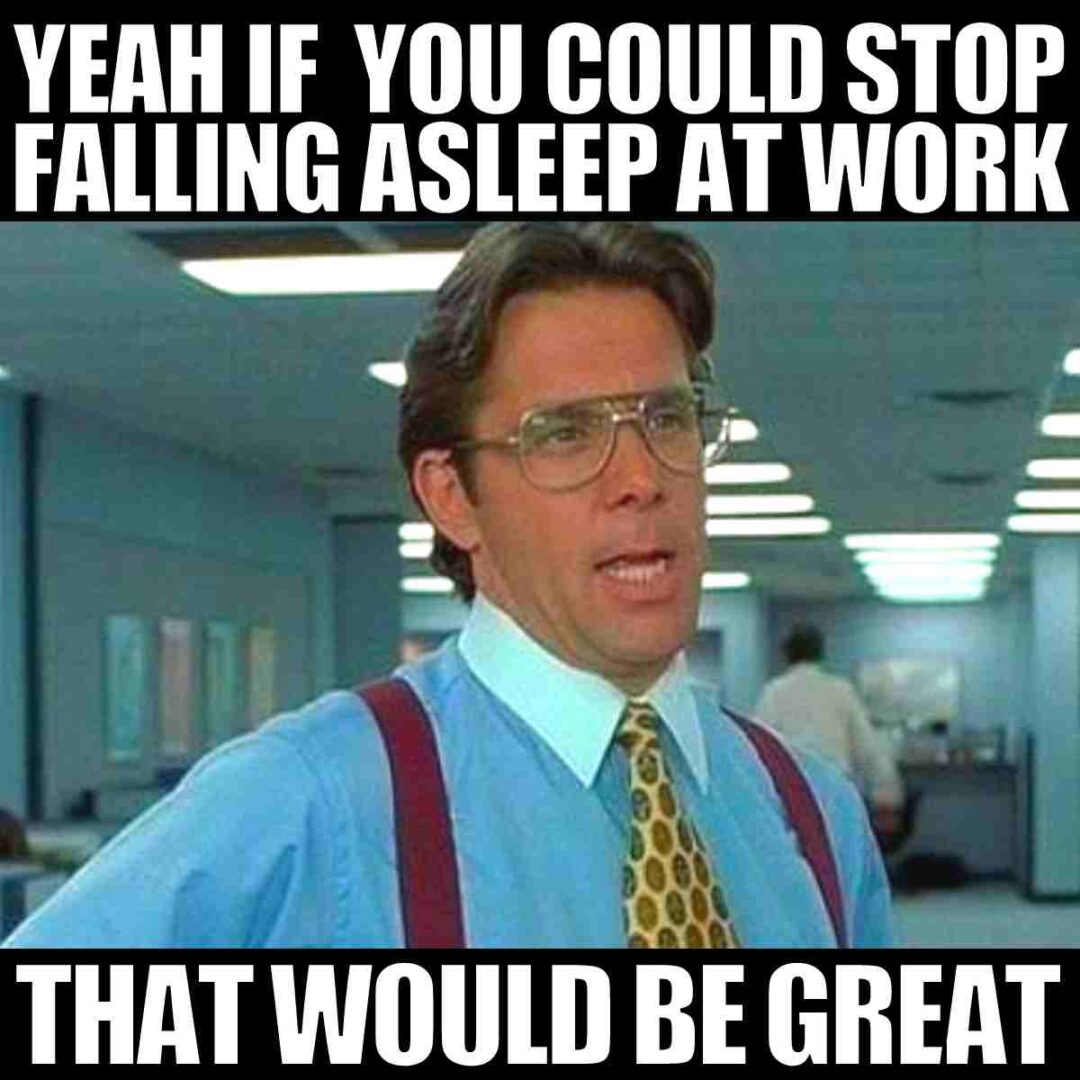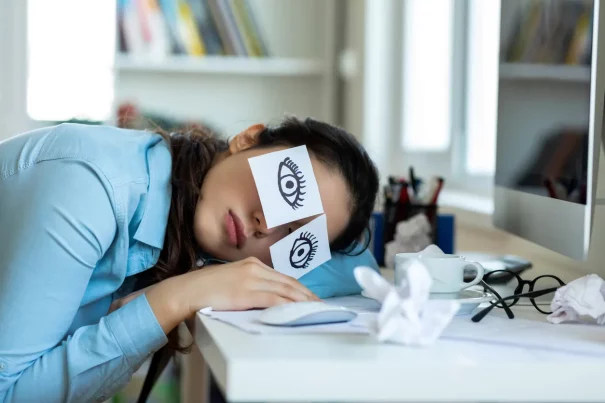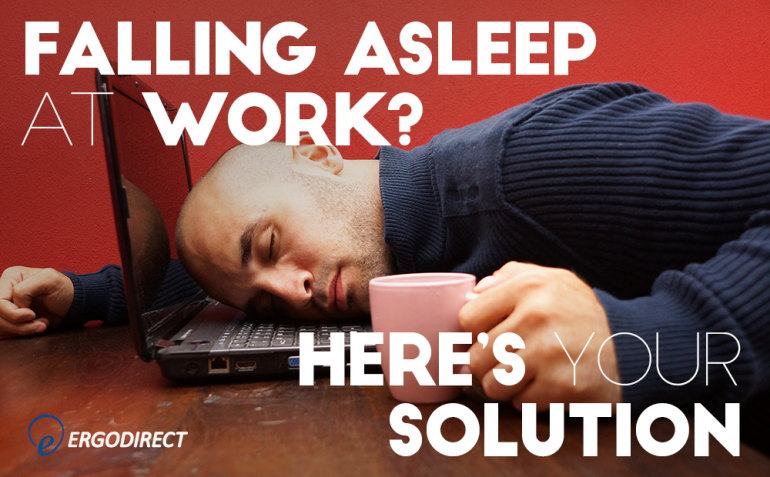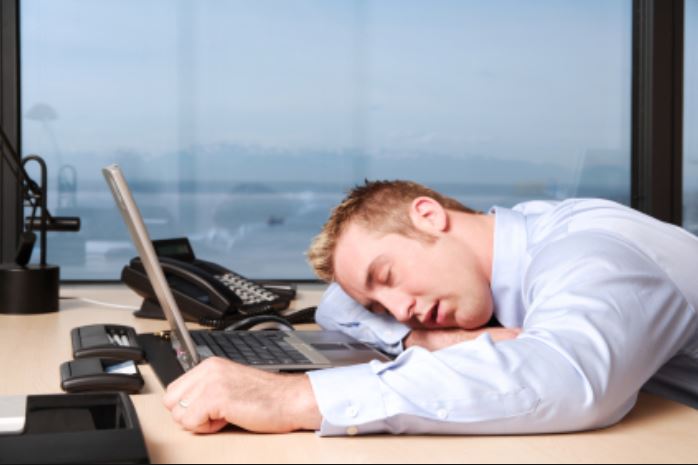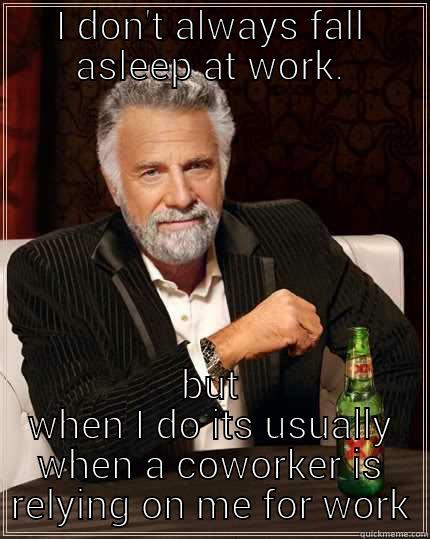You Fall Asleep At Work. This Is
.png?width=1120&name=Reasons you May Fall Asleep at Work (And How to Prevent It).png)
The fluorescent lights hum, the keyboard clicks fade into a blur, and suddenly, darkness. Waking up at your desk, disoriented and filled with dread, is a scenario increasingly common in today's demanding work culture. This isn't just about being tired; it's a symptom of a deeper societal problem impacting productivity, safety, and overall well-being.
This article explores the rising phenomenon of falling asleep at work, examining its root causes, potential consequences, and strategies for prevention. We will delve into data from organizations like the National Safety Council and the Centers for Disease Control and Prevention (CDC) to understand the scope of the problem. We will also consider the perspectives of employers, employees, and sleep experts to offer a comprehensive overview of this critical issue. Ultimately, this investigation aims to provide actionable insights for individuals and organizations to combat workplace fatigue and promote a healthier, more productive work environment.
The Scope of the Problem
Falling asleep at work is more prevalent than many realize. Studies indicate that a significant percentage of the workforce has experienced this phenomenon, ranging from occasional brief lapses to more extended periods of unconsciousness. The consequences of these episodes can be severe, depending on the individual's role and work environment.
Data from the National Safety Council highlights the significant impact of fatigue on workplace accidents. Industries requiring sustained attention, such as transportation, healthcare, and manufacturing, are particularly vulnerable. The CDC has also recognized sleep deprivation as a public health concern, linking it to various chronic diseases and reduced cognitive function.
Underlying Causes: A Perfect Storm
Several factors contribute to the increase in workers falling asleep on the job. The pervasive culture of overwork is a primary driver. Many employees feel pressured to work long hours, often sacrificing sleep to meet demanding deadlines and performance targets.
The rise of technology and remote work has blurred the lines between work and personal life. Constant connectivity can lead to increased stress and difficulty disconnecting, further disrupting sleep patterns. Additionally, underlying sleep disorders like sleep apnea and insomnia can significantly contribute to daytime sleepiness. These often go undiagnosed and untreated.
The Role of Sleep Disorders
Undiagnosed sleep disorders are a major contributing factor often overlooked. Conditions like obstructive sleep apnea can interrupt sleep cycles, leading to chronic fatigue. Insomnia, characterized by difficulty falling or staying asleep, is another common culprit. The American Academy of Sleep Medicine estimates that millions of Americans suffer from undiagnosed sleep disorders, exacerbating the problem of workplace fatigue.
Consequences: Beyond Embarrassment
The consequences of falling asleep at work extend far beyond mere embarrassment. In safety-sensitive occupations, it can be life-threatening. Imagine a truck driver, a surgeon, or an air traffic controller experiencing a lapse in consciousness – the potential for disaster is immense.
Beyond immediate safety risks, chronic fatigue can negatively impact productivity and decision-making. Drowsy employees are more likely to make errors, have difficulty concentrating, and experience reduced reaction times. This can lead to decreased efficiency, increased costs, and damaged reputations for both individuals and organizations.
"Fatigue is a silent killer in the workplace," warns Dr. [Fictional Name], a sleep specialist at the [Fictional Hospital Name]. "It impairs judgment, slows reflexes, and increases the risk of accidents. We need to treat sleep deprivation with the same seriousness as other workplace hazards."
Employer Responsibilities: Creating a Culture of Rest
Employers have a crucial role to play in addressing the issue of workplace fatigue. Creating a culture that values rest and prioritizes employee well-being is essential. This includes promoting reasonable work hours, encouraging employees to take breaks, and providing resources for sleep health education.
Implementing policies that address fatigue management is also critical. This may involve scheduling changes, nap rooms, or access to counseling services. Some companies are exploring innovative solutions like wearable technology to monitor employee fatigue levels and provide timely interventions.
Legal and Ethical Considerations
In certain industries, there are legal requirements related to fatigue management. For example, transportation companies are subject to regulations governing driver hours of service. Failing to comply with these regulations can result in hefty fines and legal liabilities. Ethically, employers have a responsibility to ensure the safety and well-being of their employees.
Employee Strategies: Taking Control of Your Sleep
While employers have a responsibility to create a supportive environment, employees also need to take proactive steps to improve their sleep habits. Establishing a consistent sleep schedule, creating a relaxing bedtime routine, and avoiding caffeine and alcohol before bed are all important strategies.
Seeking professional help for sleep disorders is crucial. A sleep specialist can diagnose and treat underlying conditions like sleep apnea and insomnia. Practicing mindfulness and stress-reduction techniques can also help improve sleep quality. Remember, prioritizing sleep is an investment in your health, well-being, and professional success.
Looking Ahead: A Call for Change
Addressing the issue of falling asleep at work requires a multi-faceted approach involving employers, employees, and healthcare professionals. By raising awareness, implementing effective strategies, and prioritizing sleep health, we can create safer, healthier, and more productive workplaces.
The conversation must shift from viewing sleep as a luxury to recognizing it as a fundamental need. Investing in sleep is an investment in human capital. Only then can we truly tackle this pervasive problem and create a future where falling asleep at work is a rarity, not a reality. The long-term benefits of prioritizing sleep far outweigh the short-term gains of overwork.
